Hassani S. Mathematical Methods: For Students of Physics and Related Fields
Подождите немного. Документ загружается.

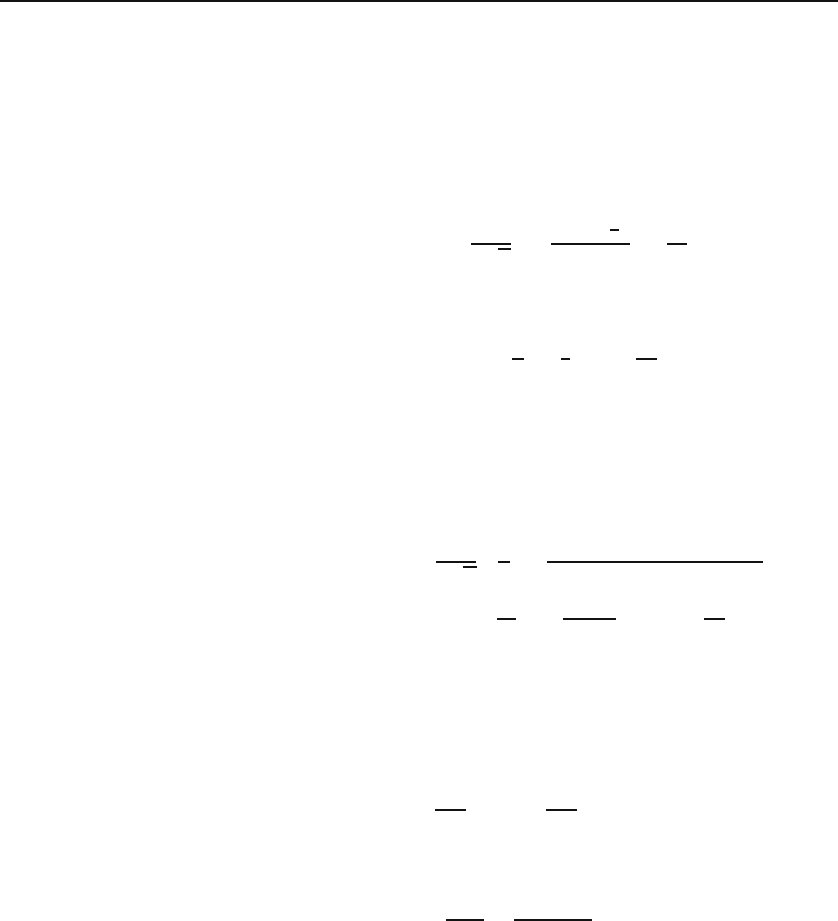
658 Laplace’s Equation: Cylindrical Coordinates
27.11. Derive the expansion of the sine function in terms of Bessel functions.
Hint: See Example 27.5.1.
27.12. The integral
∞
0
e
−ax
J
0
(bx) dx may look intimidating, but leads to a
very simple expression. To see this:
(a) Substitute for J
0
(bx) its series representation, and express the result of
the integration in terms of the gamma function (a factorial, in this case).
(b) Use one of the results of Problem 11.1 to show that
#
∞
0
e
−ax
J
0
(bx) dx =
1
a
√
π
∞
n=0
Γ(n +
1
2
)
n!
−
b
2
a
2
n
.
(c) Show that this result can also be expressed in terms of the hypergeometric
function:
#
∞
0
e
−ax
J
0
(bx) dx =
1
a
F
1
2
, 1; 1; −
b
2
a
2
.
(d) Now use the result of Problem 11.4 to express the integral in a very simple
form.
27.13. By writing the series representation of the Bessel function as in the
previous problem, and using the result of Problem 11.2, show that for integer
m
#
∞
0
e
−ax
J
m
(bx) dx =
1
a
√
π
b
a
m
Γ(m/2+1)Γ((m +1)/2)
Γ(m +1)
· F
m
2
+1,
m +1
2
; m +1;−
b
2
a
2
.
27.14. Multiply both sides of Equation (27.40) by ρJ
m
(x
mk
a/ρ)cosjϕ and
integrate appropriately to obtain A
jk
. Switch cosine to sine and do the same
to find B
jk
.
27.15. Use Equation (27.18) to show that
#
a
0
ρJ
0
x
0n
a
ρ
dρ =
a
2
x
0n
J
1
(x
0n
).
27.16. Use the Parseval relation (27.38) for f (ρ)=ρ
k
to obtain
∞
n=1
1
x
2
mn
=
1
4(m +1)
for any m. Hint: See Example 27.5.2.
27.17. A long heat conducting cylinder of radius a is composed of two halves
(with semicircular cross sections) with an infinitesimal gap between them.
The upper and lower halves of the cylinder are in contact with heat baths of
temperatures +T
0
and −T
0
, respectively. Find the temperature both inside
and outside the cylinder.

27.7 Problems 659
27.18. A long heat conducting cylinder of radius a is composed of two halves
(with semicircular cross sections) with an infinitesimal gap between them.
The upper and lower halves of the cylinder are in contact with heat baths
of temperatures +T
1
and −T
1
, respectively. The cylinder is inside a larger
cylinder (and coaxial with it) held at temperature T
2
. Find the temperature
inside the inner cylinder, between the two cylinders, and outside the outer
cylinder.
27.19. A long conducting cylinder of radius a is kept at potential V
1
.The
cylinder is inside a larger cylinder (and coaxial with it) held at potential V
2
.
Find the potential inside the inner cylinder, between the two cylinders, and
outside the outer cylinder.
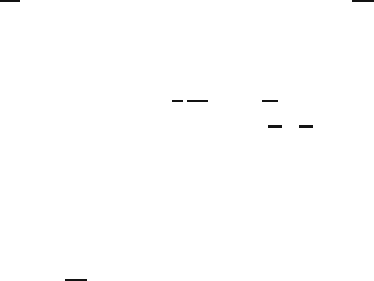
Chapter 28
Other PDEs
of Mathematical Physics
Chapters 25, 26, and 27 discussed one of the most important PDEs of mathe-
matical physics, Laplace’s equation. The techniques used in solving Laplace’s
equation apply to all PDEs encountered in introductory physics. Since we
have already spent a considerable amount of time on these techniques, we
shall simply provide some illustrative examples of solving other PDEs.
28.1 The Heat Equation
The heat equation, sometimes also called the diffusion equation,wasin- diffusion equation
troduced in Chapter 22 [see Equation (22.3)]. The separation of variables
T (t, r)=g(t)R(r) yields
∂
∂t
[g(t)R(r)] = k
2
∇
2
[g(t)R(r)] ⇒ R(r)
dg
dt
= k
2
g(t)∇
2
R.
Dividing both sides by g(t)R(r), we obtain
1
g
dg
dt
= k
2
1
R
∇
2
R
≡−λ
.
The LHS is a function of t, and the RHS a function of r. The independence of
these variables forces each side to be a constant. Calling this constant −k
2
λ
for later convenience, we obtain an ODE in time and a PDE in the remaining
variables:
dg
dt
+ k
2
λg =0 and ∇
2
R + λR =0. (28.1)
The general solution of the first equation is
g(t)=Ae
−k
2
λt
(28.2)
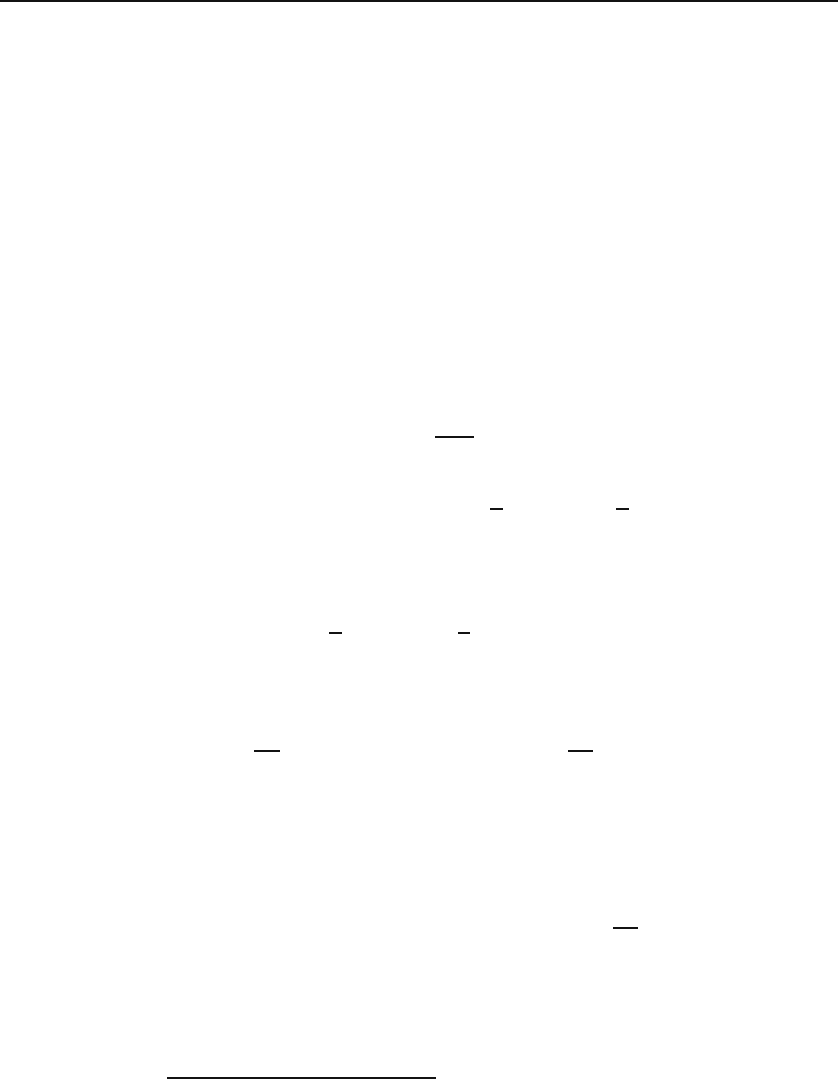
662 Other PDEs of Mathematical Physics
and that of the second equation can be obtained precisely by the methods of
the last chapter. We illustrate this by some examples, but first we need to
keep in mind that λ is to be assumed positive, otherwise the exponential in
λ of the heat
equation is always
positive
Equation (28.2) will cause a growth of g(t) (and, therefore, the temperature)
beyond bounds.
28.1.1 Heat-Conducting Rod
Let us consider a one-dimensional conducting rod with one end at the origin
x = 0 and the other at x = b. The two ends are held at T = 0. Initially,
heat-conducting
rod
at t = 0, we assume a temperature distribution on the rod given by some
function f (x). We want to calculate the temperature at time t at any point
x on the rod.
Due to the one-dimensionality of the rod, the y-andz-dependence can be
ignored, and the Laplacian is reduced to a second derivative in x.Thus,the
second equation in (28.1) becomes
d
2
X
dx
2
+ λX =0, (28.3)
where X is a function of x alone. The general solution of this equation is
1
X(x)=B cos(
√
λx)+C sin(
√
λx).
Since the two ends of the rod are held at T = 0, we have the boundary
conditions T (t, 0) = 0 = T (t, b), which imply that X(0) = 0 = X(b). These
give B =0and
2
sin(
√
λb)=0 ⇒
√
λb= nπ for n =1, 2,....
With a label n attached to λ, the solution, and the constant multiplying it,
we can now write
λ
n
=
nπ
b
2
and X
n
(x)=C
n
sin
nπ
b
x
for n =1, 2,....
The (subscripted) solution of the time equation is also simply obtained:
g
n
(t)=A
n
e
−k
2
(nπ/b)
2
t
.
This leads to a general solution of the form
T (t, x)=
∞
n=1
B
n
e
−(nπk/b)
2
t
sin
nπ
b
x
, (28.4)
where B
n
≡ A
n
C
n
. The initial condition f(x)=T (0,x) yields
f(x)=
∞
n=1
B
n
sin(nπx/b)
1
The reader may check that the only solution for λ = 0 is the trivial solution.
2
Consult Section 25.2.
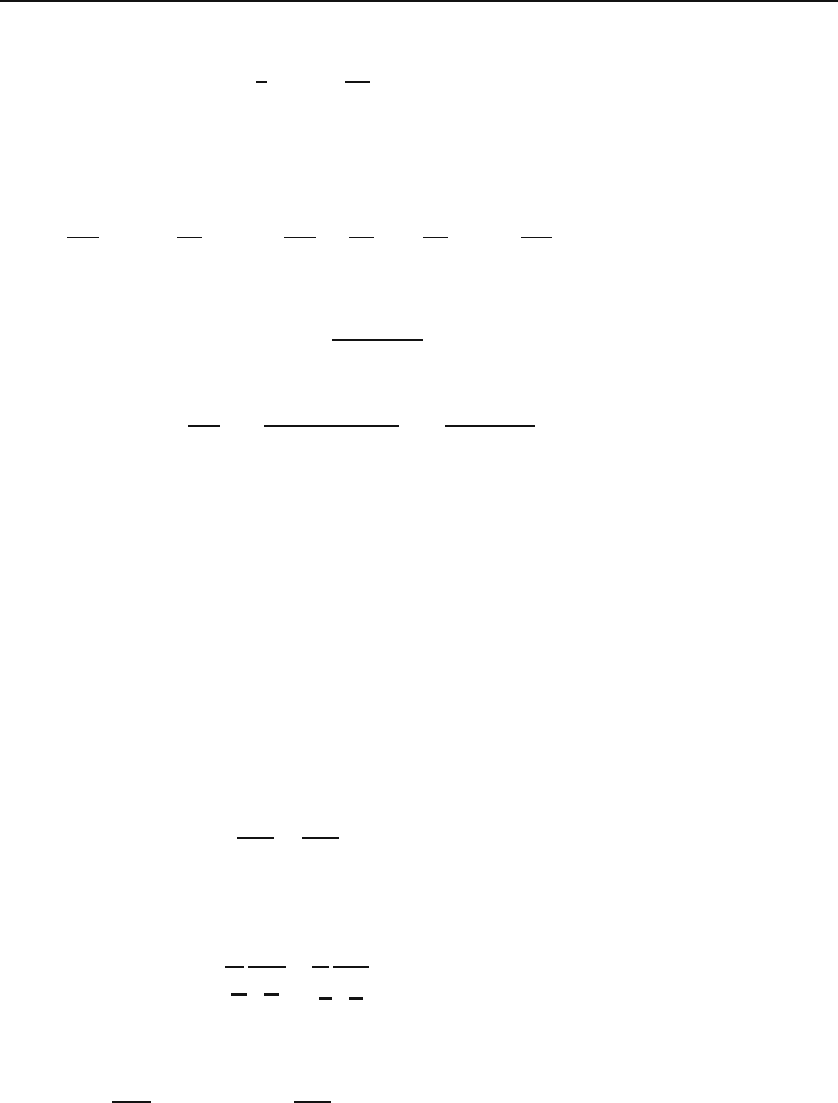
28.1 The Heat Equation 663
which is a Fourier series from which we can calculate the coefficients
B
n
=
2
b
#
b
0
sin
nπ
b
x
f(x) dx.
Thus if we know the initial temperature distribution on the rod [the function
f(x)], we can determine the temperature of the rod for all time. For instance,
if the initial temperature distribution of the rod is uniform, say T
0
,then
B
n
=
2T
0
b
#
b
0
sin
nπ
b
x
dx =
2T
0
b
−
b
nπ
cos
nπ
b
x
b
0
=
2T
0
nπ
[1 − (−1)
n
].
It follows that the odd n’s survive, and if we set n =2m +1,weobtain
B
2m+1
=
4T
0
π(2m +1)
and
T (t, x)=
4T
0
π
∞
m=0
e
−[(2m+1)πk/b]
2
t
2m +1
sin
(2m +1)π
b
x
.
This distribution of temperature for all time can be obtained numerically for
any heat conductor whose k is known. Note that the exponential in the sum
causes the temperature to drop to zero (the fixed temperature of its two end
points) eventually. This conclusion is independent of the initial temperature
distribution of the rod as Equation (28.4) indicates.
28.1.2 Heat Conduction in a Rectangular Plate
As a more complicated example involving a second spatial variable, consider
a rectangular heat-conducting plate with sides of length a and b all held at
T = 0. Assume that at time t = 0 the temperature has a distribution function
conduction of heat
in a rectangular
plate
f(x, y). Let us find the variation of temperature for all points (x, y)atall
times t>0.
The spatial part of the heat equation for this problem is
∂
2
R
∂x
2
+
∂
2
R
∂y
2
+ λR =0.
A separation of variables, R(x, y)=X(x)Y (y), and its usual procedure leads
to the following equation:
1
X
d
2
X
dx
2
≡−μ
+
1
Y
d
2
Y
dy
2
≡−ν
+ λ =0.
This leads to the following two ODEs:
d
2
X
dx
2
+ μX =0,
d
2
Y
dy
2
+ νY =0,λ= μ + ν.
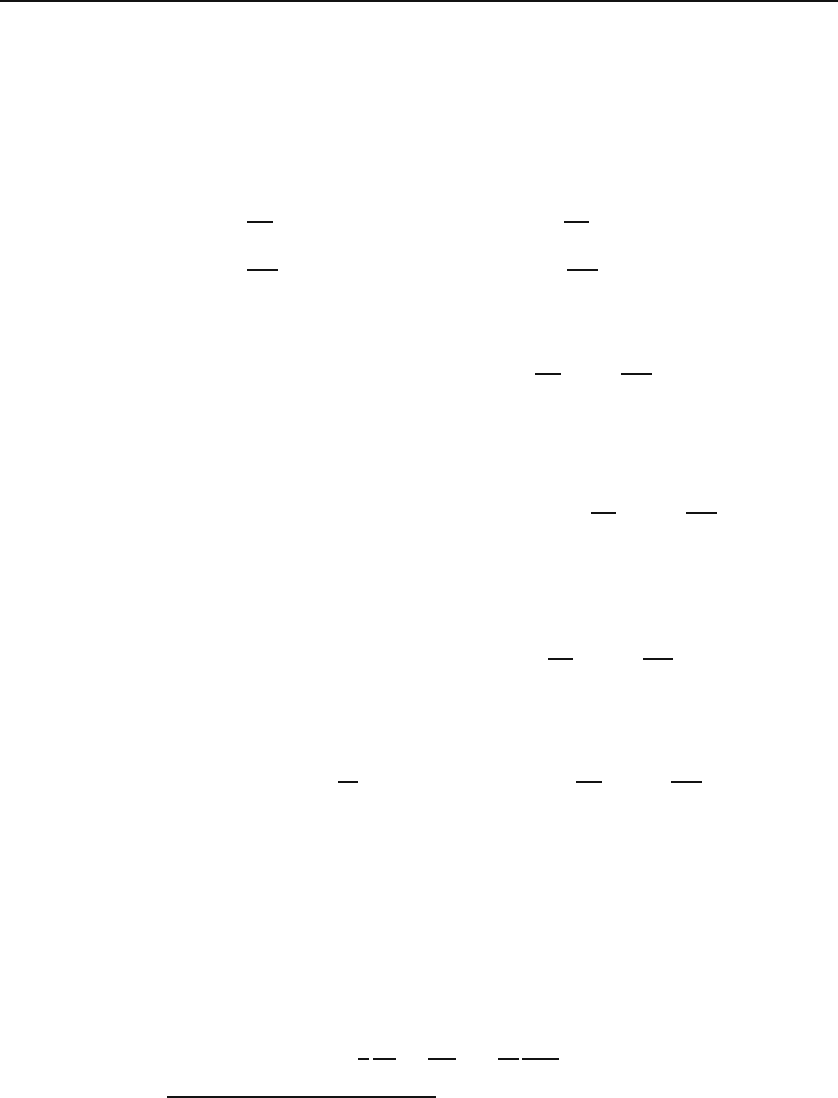
664 Other PDEs of Mathematical Physics
Due to the periodicity of the BCs, the general solutions of these equations are
trigonometric functions. The four boundary conditions
T (0,y,t)=T (a, y, t)=T (x, 0,t)=T (x, b, t)=0
determine the specific form of the solutions as well as the indexed constants
of separation:
μ
n
=
nπ
a
2
and X
n
(x)=A
n
sin
nπ
a
x
for n =1, 2,...,
ν
m
=
mπ
b
2
and Y
m
(y)=B
m
sin
mπ
b
y
for m =1, 2,....
So, λ becomes a double indexed quantity:
λ ≡ λ
mn
= μ
n
+ ν
m
=
nπ
a
2
+
mπ
b
2
.
The solution to the g equation can be expressed as g(t)=C
mn
e
−k
2
λ
mn
t
.
Putting everything together, we obtain
T (x, y, t)=
∞
n=1
∞
m=1
A
mn
e
−k
2
λ
mn
t
sin
nπ
a
x
sin
mπ
b
y
,
where A
mn
= A
n
B
m
C
mn
is an arbitrary constant. To determine it, we impose
the initial condition T (x, y, 0) = f (x, y). This yields
f(x, y)=
∞
n=1
∞
m=1
A
mn
sin
nπ
a
x
sin
mπ
b
y
from which we find the coefficients A
mn
(see Theorem 25.2.5):
A
mn
=
4
ab
#
a
0
dx
#
b
0
dyf (x, y)sin
nπ
a
x
sin
mπ
b
y
.
28.1.3 Heat Conduction in a Circular Plate
In this example, we consider a circular plate of radius a whose rim is held
at T = 0 and whose initial surface temperature is characterized by a func-
tion f(ρ, ϕ). We are seeking the temperature distribution on the plate for
circular plate
all time. The spatial part of the heat equation in z-independent cylindrical
coordinates,
3
appropriate for a circular plate, is
1
ρ
∂
∂ρ
ρ
∂R
∂ρ
+
1
ρ
2
∂
2
R
∂ϕ
2
+ λR =0
3
See the discussion of Subsection 22.3.
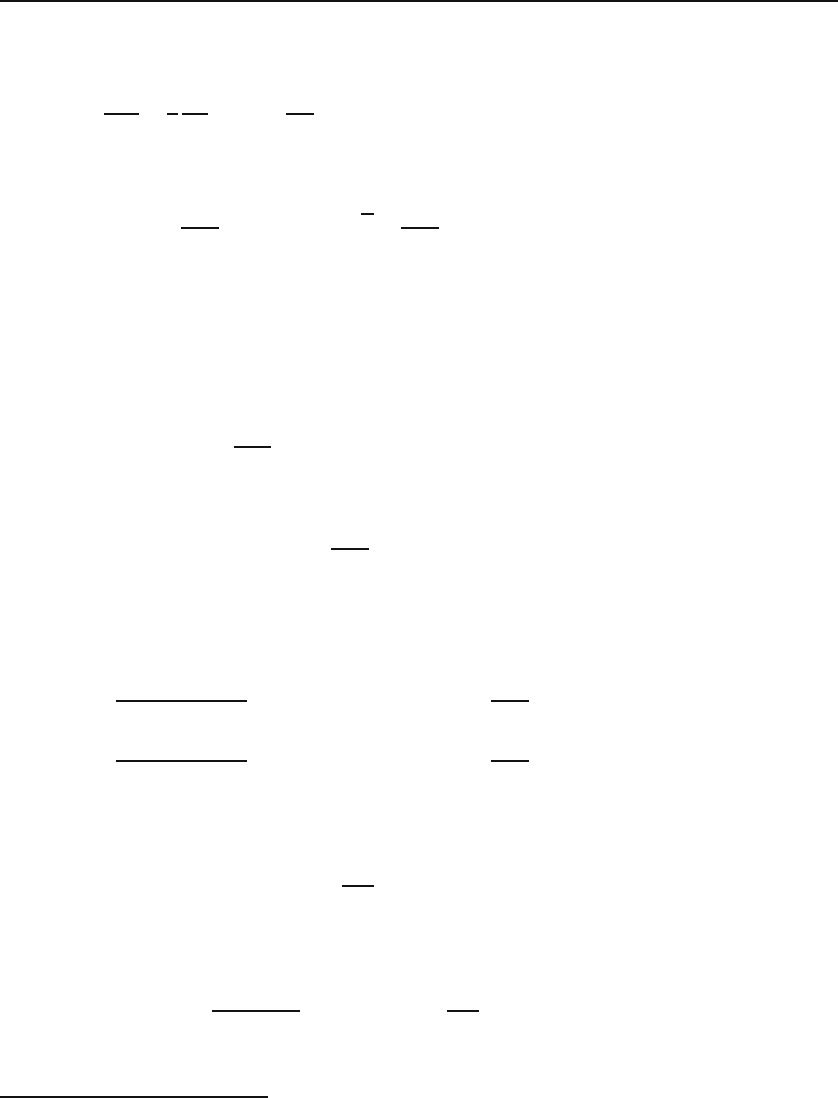
28.1 The Heat Equation 665
which, after the separation of variables, R(ρ, ϕ)=R(ρ)S(ϕ), reduces to
S(ϕ)=A cos mϕ + B sin mϕ for m =0, 1, 2,...,
d
2
R
dρ
2
+
1
ρ
dR
dρ
+
λ −
m
2
ρ
2
R =0.
The solution of the last (Bessel) equation, which is well defined for ρ =0and
vanishes at ρ = a,is
R(ρ)=CJ
m
x
mn
a
ρ
with
√
λ =
x
mn
a
and n =1, 2,...,
where, as usual, x
mn
is the nth root of J
m
.Weseethatλ is a double-indexed
quantity. The time equation (28.2) has a solution of the form
g(t)=D
mn
e
−k
2
λ
mn
t
= D
mn
e
−k
2
(x
2
mn
/a
2
)t
.
Multiplying the three solutions and summing over the two indices yields the
most general solution
T (ρ, ϕ, t)=
∞
m=0
∞
n=1
J
m
x
mn
a
ρ
e
−(kx
mn
/a)
2
t
(A
mn
cos mϕ + B
mn
sin mϕ).
The coefficients are determined from the initial condition
f(ρ, ϕ)=T (ρ, ϕ, 0) =
∞
m=0
∞
n=1
J
m
x
mn
a
ρ
(A
mn
cos mϕ + B
mn
sin mϕ).
Except for the hyperbolic sine term, this equation is identical to (27.40).
Therefore, the coefficients are given by expressions similar to Equation (27.41).
In the case at hand, we get
A
mn
=
2
πa
2
J
2
m+1
(x
mn
)
#
2π
0
dϕ
#
a
0
dρ ρf (ρ, ϕ)J
m
x
mn
a
ρ
cos mϕ,
B
mn
=
2
πa
2
J
2
m+1
(x
mn
)
#
2π
0
dϕ
#
a
0
dρ ρf (ρ, ϕ)J
m
x
mn
a
ρ
sin mϕ.
In particular, if the initial temperature distribution is independent of ϕ,
then only the term with m = 0 contributes,
4
and we get
T (ρ, t)=
∞
n=1
A
n
J
0
x
0n
a
ρ
e
−(kx
0n
/a)
2
t
.
With f (ρ)representingtheϕ-independent initial temperature distribution,
the coefficient A
n
is found to be
A
n
=
4
a
2
J
2
1
(x
0n
)
#
a
0
dρ ρf (ρ)J
0
x
0n
a
ρ
.
Note that the temperature distribution does not develop any ϕ dependence
at later times.
4
See the discussion after Equation (27.41).
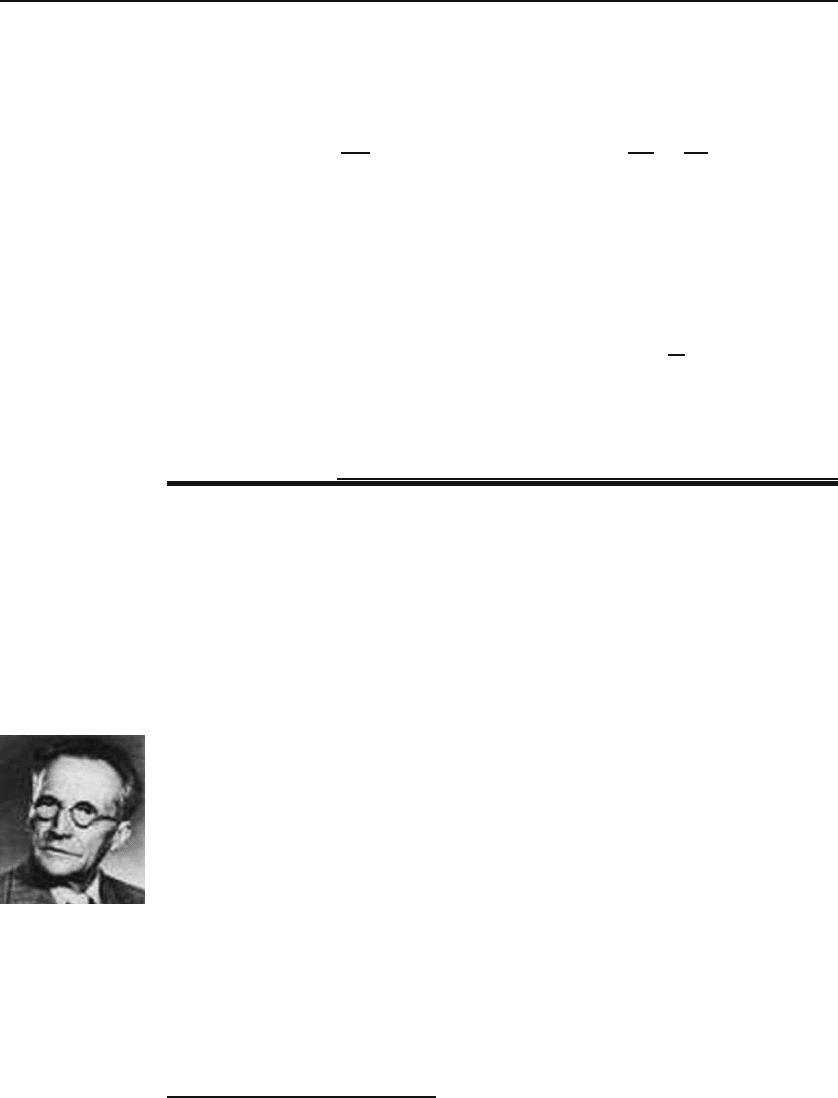
666 Other PDEs of Mathematical Physics
28.2 The Schr¨odinger Equation
Chapter 22 separated the time part of the Schr¨odinger equation from its space
part, and resulted in the following two equations:
∇
2
ψ +
2m
2
[E −V (r)]ψ =0 and
dT
dt
=
iE
T, (28.5)
where E, the energy of the quantum particle, is the constant of separation.
5
We have also used ψ instead of R, because the latter is usually reserved to
denote a function of the radial variable r (or ρ) when separating the variables
of the Laplacian in spherical (or cylindrical) coordinates.
The solution of the time part is easily obtained: It is simply
T (t)=Ae
iEt/
= Ae
iωt
where ω ≡
E
. (28.6)
It is the solution of the first equation in (28.5), the time-independent
time-independent
Schr¨odinger
equation
Schr¨odinger equation that will take up most of our time in this section.
Historical Notes
Erwin Schr¨odinger was a student at Vienna from 1906 and taught there for ten
years from 1910 to 1920 with a break for military service in World War I. While
at Vienna he worked on radioactivity, proving the statistical nature of radioactive
decay. He also made important contributions to the kinetic theory of solids, studying
the dynamics of crystal lattices.
After leaving Vienna in 1920 he was appointed to a professorship in Jena, where
he stayed for a short time. He then moved to Stuttgart, and later to Breslau before
accepting the chair of theoretical physics at Zurich in late 1921. During these years
of changing from one place to another, Schr¨odinger studied physiological optics, in
particular the theory of color vision.
Zurich was to be the place where Schr¨odinger made his most important contribu-
tions. From 1921 he studied atomic structure. In 1924 he began to study quantum
statistics soon after reading de Broglie’s thesis which was to have a major influence
on his thinking.
Schr¨odinger published very important work relating to wave mechanics and the
general theory of relativity in a series of papers in 1926. Wave mechanics, proposed
by Schr¨odinger in these papers, was the second formulation of quantum theory, the
first being matrix mechanics due to Heisenberg. For this work Schr¨odinger was
awarded the Nobel prize in 1933.
Erwin Schr¨odinger
1887–1961
Schr¨odinger went to Berlin in 1927 where he succeeded Planck as the chair of
theoretical physics and he became a colleague of Einstein’s.
Although he was a Catholic, Schr¨odinger decided in 1933 that he couldn’t live
in a country in which the persecution of Jews had become a national policy. He left,
spending time in Britain where he was at the University of Oxford from 1933 until
1936. In 1936 he went to Austria and spent the years 1936–1938 in Graz. However,
the advancing Nazi threat caught up with him again in Austria and he fled again,
this time settling in Dublin, Ireland, in 1939.
5
We used α in place of E in Chapter 22.
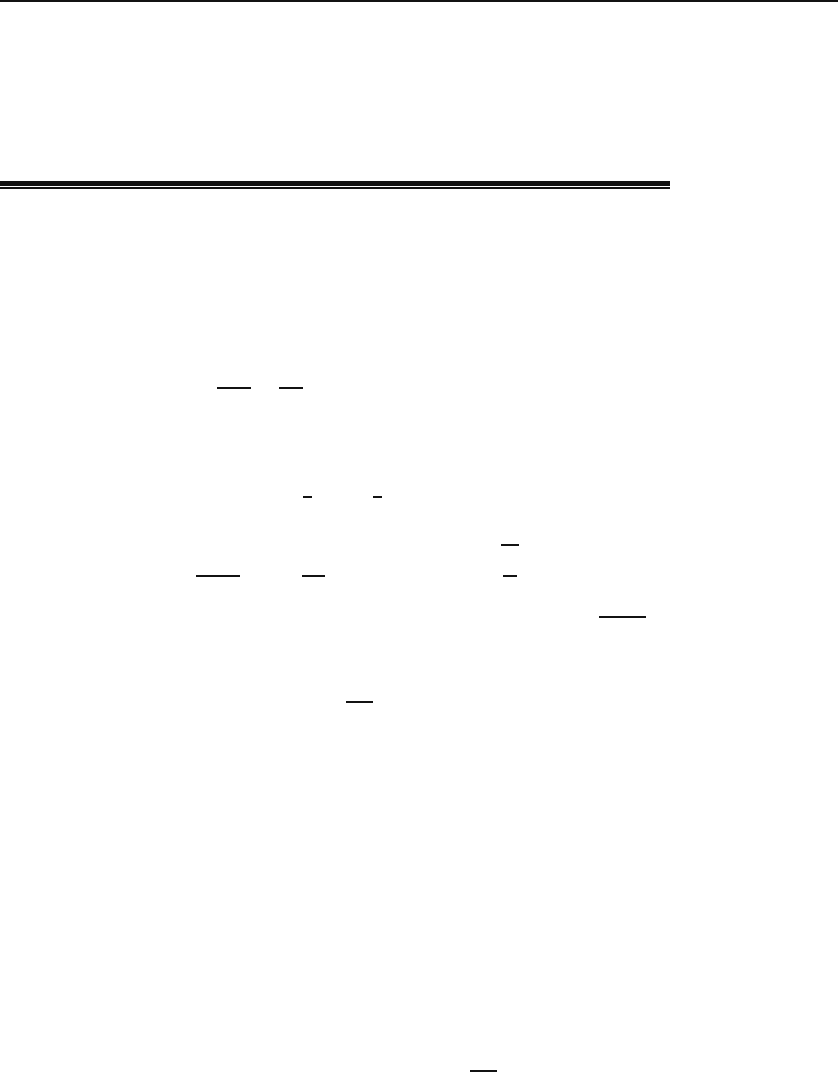
28.2 The Schr¨odinger Equation 667
His study of Greek science and philosophy is summarized in Nature and the
Greeks (1954) which he wrote while in Dublin. Another important book written
during this period was What Is Life (1944) which led to progress in biology. He
remained in Dublin until he retired in 1956 when he returned to Vienna.
During his last few years Schr¨odinger remained interested in mathematical physics
and continued to work on general relativity, unified field theory, and meson
physics.
28.2.1 Quantum Harmonic Oscillator
As an important example of the Schr¨odinger equation, we consider a particle quantum harmonic
oscillator
in a one-dimensional harmonic oscillator potential.
The one-dimensional time-independent Schr¨odinger equation for a particle
of mass μ in a potential V (x)is
d
2
ψ
dx
2
+
2μ
2
[E − V (x)]ψ =0,
where E is the total energy of the particle.
For a harmonic oscillator (with the “spring” constant k),
V (x)=
1
2
kx
2
≡
1
2
μω
2
x
2
and
ψ
−
μ
2
ω
2
2
x
2
ψ +
2μ
2
Eψ =0,ω≡
"
k
μ
.
To simplify the equation, we make the change of variables x =(
/μω)y.
The equation then becomes
ψ
− y
2
ψ +
2E
ω
ψ =0, (28.7)
where the primes indicate differentiation with respect to y.
We could solve this DE by the Frobenius power series method. However,
tradition suggests that we first look at the behavior of the solution at y →∞.
In this limit, we can ignore the last term in (28.7), and the DE becomes
ψ
− y
2
ψ ≈ 0
which can easily be shown to have (an approximate) solution of the form
e
±y
2
/2
. Since the positive exponent diverges at infinity, we have to retain
only the solution with negative exponent. Following the traditional steps,
we consider a solution of the form ψ(y) ≡ H(y)exp(−y
2
/2) in which the
asymptotic function has been separated. Substitution of this separated form
of ψ in (28.7) results in
H
− 2yH
+ λH =0 where λ =
2E
ω
− 1. (28.8)

668 Other PDEs of Mathematical Physics
This is the Hermite differential equation.Hermite
differential
equation
To solve the Hermite DE by the Frobenius method, we assume an expan-
sion of the form H(y)=
∞
n=0
c
n
y
n
with
H
(y)=
∞
n=1
nc
n
y
n−1
=
∞
n=0
(n +1)c
n+1
y
n
,
H
(y)=
∞
n=1
n(n +1)c
n+1
y
n−1
=
∞
n=0
(n +1)(n +2)c
n+2
y
n
,
where in the last step of each equation, we changed the dummy index to
m = n − 1, and in the end, replaced m with n. Substituting in Equation
(28.8) gives
∞
n=0
[(n +1)(n +2)c
n+2
+ λc
n
]y
n
≡S
1
−2
∞
n=0
(n +1)c
n+1
y
n+1
=0. (28.9)
Now separate the zeroth term of the first sum to obtain
S
1
=2c
2
+ λc
0
+
∞
n=1
[(n +1)(n +2)c
n+2
+ λc
n
]y
n
.
Changing the dummy index to m = n − 1 yields
S
1
=2c
2
+ λc
0
+
∞
m=0
[(m +2)(m +3)c
m+3
+ λc
m+1
]y
m+1
whose dummy index can be switched back to n. Substitution of this last result
in (28.9) now yields
2c
2
+ λc
0
+
∞
n=0
[(n +2)(n +3)c
n+3
+ λc
n+1
− 2(n +1)c
n+1
]y
n+1
=0.
Setting the coefficients of powers of y equal to zero, we obtain
c
2
= −
λ
2
c
0
,
c
n+3
=
2(n +1)− λ
(n +2)(n +3)
c
n+1
for n ≥ 0,
or, replacing n with n −1 and noting that the resulting recursion relation is
true for n = 0 as well, we obtain
recursion relation
for Hermite DE
c
n+2
=
2n −λ
(n +1)(n +2)
c
n
,n≥ 0. (28.10)
The ratio test yields easily that the series is convergent for all values of y.
Physics dictates
mathematics!
However, on physical grounds, i.e., the demand that lim
x→∞
ψ(x)=0,the
series must be truncated. Let us see why.
